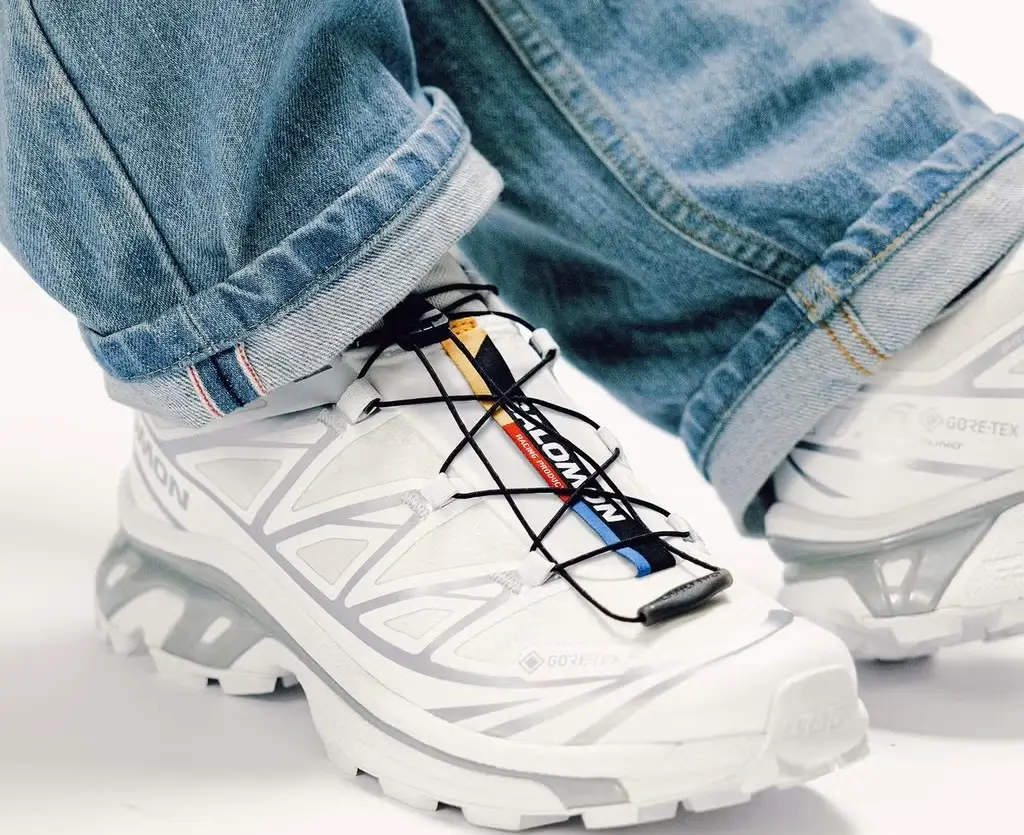The Adidas Samba has long been a staple in the sneaker world, known for its timeless design, versatility, and cultural resonance. Originally created in 1949 as a football shoe to help players maintain traction on icy surfaces, the Samba has evolved into a fashion icon. From its classic leather iteration to various collaborations and reworks, the Samba holds a unique place in both streetwear and sportswear. Recently, Adidas took a more experimental approach by introducing the “Lace Samba”—a version that departs from the usual leather and suede construction in favor of an intricate lace design. While visually striking, this new iteration raises questions about practicality, durability, and whether it’s truly suited for the streets.
Design: Aesthetic Masterpiece or Unnecessary Experiment?
The Lace Samba is undoubtedly a conversation starter. The intricate lace overlay, paired with the familiar Samba silhouette, creates a delicate, almost ethereal look. Adidas has embraced a high-fashion aesthetic with this design, catering to sneakerheads and fashion enthusiasts looking for something avant-garde. The shoe’s lace upper offers an artistic reinterpretation of the classic, playing with textures and transparency in a way that makes it visually distinct from the traditional Samba.
This approach is in line with the trend of blending streetwear with haute couture, which has been seen in connections like Nike’s Sacai releases and Adidas’ partnership with Prada. The Lace Samba fits within this broader movement of elevating sportswear to the realm of fashion-forward, high-end design. On a purely visual level, the shoes are stunning, and they have the potential to make a bold fashion statement. However, fashion doesn’t always align with function.
While the Lace Samba succeeds in aesthetic innovation, it leaves much to be desired in terms of practicality. Lace, by nature, is a delicate material, and although the shoes may look stunning on the runway or in carefully curated Instagram photos, they are far from suitable for the rigors of everyday streetwear. The question arises: Is Adidas sacrificing too much function for form in this design?
Durability: Fragile Footwear
One of the main criticisms of the Lace Samba is its lack of durability. The original Samba was built to withstand tough conditions on the football pitch, with durable leather that could take a beating. In contrast, the Lace Samba is more of a fragile piece, better suited for light, occasional wear than daily use on city streets.
Lace, as a material, isn’t particularly known for its strength or resilience. The delicate fabric is prone to tearing, staining, and general wear and tear. The idea of a lace sneaker immediately raises concerns about how well it can hold up to real-world conditions, especially in environments where sneakers are expected to endure everything from unpredictable weather to crowded urban streets. Even minor contact with rough surfaces or accidental spills could lead to significant damage, making the shoe more of a special-occasion accessory than a reliable, everyday option.
For those who are accustomed to the Samba’s reputation for being an all-around versatile sneaker, this shift toward a more delicate design could be a disappointment. There’s something to be said for a sneaker that can be worn anywhere, at any time, without having to worry about damaging its material. Unfortunately, the Lace Samba falls short of this expectation, which is crucial for a shoe meant to be worn on the streets.
Practicality: Style Over Substance
In terms of practicality, the Lace Samba’s issues go beyond durability. While the lace construction might be visually appealing, it raises significant concerns about comfort and functionality. Traditional Samba sneakers are known for their comfortable fit, ideal for all-day wear. The leather or suede construction provides both support and breathability, making them suitable for extended use. The Lace Samba, however, appears to be designed with more of a “look but don’t touch” mentality, which poses problems for those seeking functional footwear.
Lace doesn’t offer the kind of structural integrity required for a supportive, long-lasting sneaker. There’s also the issue of how the shoes handle different weather conditions. Lace is not known for its ability to repel moisture, which makes the Lace Samba a poor choice for wet or humid environments. On rainy days, the lace could easily become soaked, leading to discomfort and potential damage to the material. This delicate construction forces wearers to think twice before stepping out in anything other than perfect conditions, limiting the shoe’s versatility.
Moreover, the maintenance required for lace sneakers is far greater than that of leather or synthetic materials. Cleaning lace without damaging its intricate pattern can be a challenge, and the need for frequent maintenance detracts from the convenience factor that most sneakerheads look for in everyday shoes.
Impression
While the Lace Samba’s design choices may alienate some fans of the original, the sneaker does have a place within a certain segment of the fashion and sneaker communities. In recent years, there’s been a growing movement toward sneakers that push the boundaries of traditional design. Streetwear has increasingly blurred the line between fashion and art, and sneakers are no longer just functional footwear—they’re also collectible items, symbols of status, and expressions of personal style.
The Lace Samba taps into this trend, offering something that’s more art piece than practical shoe. For sneaker collectors, this unique design could be a must-have, something to display rather than wear. Its avant-garde aesthetic appeals to those who view sneakers as an extension of high fashion, where the rarity and visual appeal of a shoe can often outweigh considerations of comfort or functionality.
In this sense, the Lace Samba is more than just a shoe—it’s a statement. It represents the evolving relationship between streetwear and high fashion, and the willingness of brands like Adidas to experiment with bold, unconventional designs. However, for those who are more concerned with wearability than making a statement, the Lace Samba may not hold much appeal.
Adidas’ Lace Samba is a beautiful shoe, no doubt about it. Its delicate lace upper transforms the classic Samba into something far more fashion-forward and artistic. For collectors, fashion enthusiasts, and those looking for a statement piece, it’s a must-have addition to any sneaker rotation.
However, when it comes to practicality, the Lace Samba falls short. Its delicate construction and lack of durability make it an impractical choice for everyday wear, especially for those who value comfort, versatility, and the ability to withstand the elements. While it may shine in controlled environments—on the runway, in photoshoots, or in carefully curated outfits—it’s simply not built for the rigors of city life or regular use on the streets.
In the end, the Lace Samba is a reminder that not all sneakers are made for the same purpose. Some are designed to be worn and loved daily, while others, like this one, are meant to be admired from afar. Whether it becomes a fashion hit or a niche collector’s item, it undeniably represents Adidas’ willingness to push boundaries and redefine what a sneaker can be.
No comments yet.








